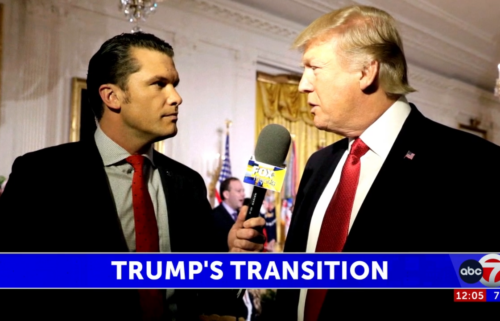Fact check: How McConnell’s impeachment trial rules differ from those that governed the Clinton trial

Senate Majority Leader Mitch McConnell argued Tuesday that the rules he is proposing for President Donald Trump’s Senate impeachment trial “closely” follow past precedent, and invoked the 1999 trial of President Bill Clinton in particular.
There are certainly similarities between McConnell’s proposal and the Clinton trial rules, but there are some differences, too — including how the rules were adopted. McConnell’s proposal was put forward over the opposition of Democrats, while the rules for the Clinton trial were adopted unanimously after a negotiation between the parties.
Here are some key differences in the rules themselves:
Evidence
McConnell changed his proposed rules on Tuesday after an outcry from Democrats and amid concerns from some members of his Republican caucus.
The new proposal was closer to the rules for the Clinton trial than his first proposal. But it’s still not exactly the same.
LIVE UPDATES: Impeachment trial of President Trump
McConnell’s new proposal was to automatically admit evidence from the House of Representatives’ impeachment inquiry. But there was a caveat: Trump’s team could raise an objection to the admission of particular evidence, triggering a Senate vote.
Clinton’s lawyers were not allowed to object to the House’s evidence, as CNN legal analyst and impeachment lawyer Ross Garber noted. For Clinton, the evidence was simply entered at the outset.
McConnell’s initial proposal for Trump’s trial was to require a vote in favor of admitting evidence. In other words, the default would not have been to admit the evidence.
Time
Under McConnell’s initial proposal, as in the Clinton trial, the House would have 24 hours of Senate time to present its pro-impeachment case and the President’s team 24 hours of Senate time to present its anti-impeachment case.
But in the Clinton trial, the rules did not specify a maximum number of days each side had to use up these 24 hours. McConnell’s plan, conversely, gives each side a maximum of three days — up from his original proposal of two days, which was castigated by Democrats.
A motion to dismiss
As the New York Times has noted, the Clinton trial rules included a specific provision for the Senate to consider a motion to dismiss the impeachment case. (The Senate resolution for the Clinton trial said that such a motion would be addressed after each side presented its arguments and was questioned by senators.)
McConnell’s proposed rules for the Trump trial do not explicitly mention a possible motion to dismiss, though Trump’s lawyers would still be allowed to make one.
Schiff’s case
Rep. Adam Schiff, the Democrats’ lead impeachment manager, argued that there are key differences between the Trump and Clinton situations that require rules different than the ones McConnell proposed. Schiff called for witnesses and documents to be subpoenaed immediately, not after the arguments from both sides.
Schiff noted that the Clinton White House had, before the Senate trial, turned over thousands of pages of documents, while the Trump White House has refused to turn over documents. And he said that, in the Clinton case, “all of the key witnesses” had already testified before the Senate trial. In this case, he noted, the House was unable to get testimony from important witnesses because Trump did not permit them to testify.
“If we’re really serious about modeling this proceeding after the Clinton trial, the Clinton precedent is one where all the documents had been provided, up front, where all the witnesses had testified, up front, prior to the trial. That is not being replicated by the McConnell resolution — not in any way, not in any shape, not in any form, far from it,” Schiff said.




